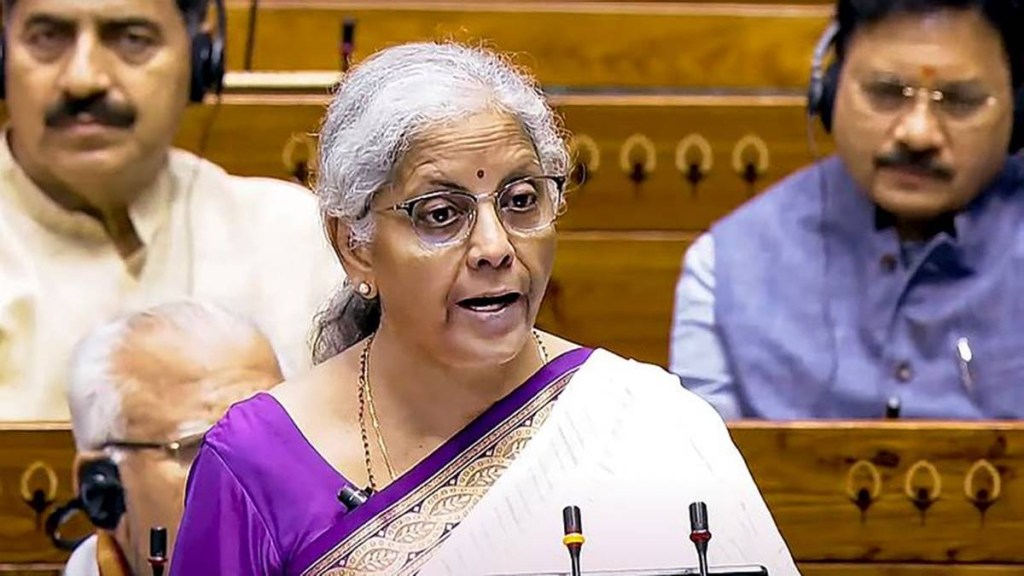– By Namrata Mittal
The budget holds significant weight for financial markets, businesses, and households, despite reforms beyond its scope and GST council’s influence on indirect taxes. With a weaker government mandate in its third term, speculation intensified over its preference for investment-led growth or welfare measures for lower-income groups to boost consumption. More so following two major pre-budget developments: a likely Rs. 1.5 trillion dividend transfer from RBI and PSUs and a surplus cash balance of Rs. 1.5-2.0 trillion, contrasting sharply with last year’s Rs. 450 billion WMA. The final budget was also eagerly waited for potential changes to capital gains taxes.
April-May FY25 tax revenues demonstrated robust 16% YoY growth, allaying tax buoyancy concerns, though cautioning against establishing trends from a brief period. These favourable conditions facilitated credible projections on receipts, increased expenditure, and a firm commitment to fiscal consolidation.
The final budget outcome continues with fiscal prudence and a credible arithmetic as has been the feature of central govt. budget post COVID. Nominal GDP growth is projected at 10.5% and gross tax revenue growth is expected at 11.7% over FY24 estimates. FY25 net receipts were revised up by Rs. 1.3 trillion, driven by higher dividend transfers (+Rs. 1.46 trillion), partly offset by increased tax devolution to states. Corporate tax revenue estimates decreased by Rs. 228 billion, while income tax estimates rose by Rs. 310 billion, resulting in a net Rs. 274 billion increases in state devolution. Capital gains tax reforms were projected to add Rs. 300 billion, with adjustments to income tax slabs expected to reduce this gain by Rs. 170 billion.
The extra dividend primarily benefited states and reduced the deficit. The government allocated most to capex loans and state transfers (+Rs. 360 billion) and cut the fiscal deficit by Rs. 722 billion. Fiscal consolidation continued, with FY25 deficit projected at 4.9% of GDP (vs. interim 5.10%, down from 5.6% in FY24). The Price Stabilization Fund and Ministry of Labor received Rs. 100 billion each, while most other expenditures remained largely unchanged. The unchanged subsidy outlay surprised markets.
The budget speech outlined nine policy focuses, emphasizing job creation in the organized sector through three employment schemes and three skill development/internship programs. Rs. 2 trillion over 5-6 years, with Rs. 100 billion for the current year, was earmarked. Andhra Pradesh received support for its capital city development, while Bihar saw increased focus on road and tourism infrastructure.
The 2024 political landscape influenced increased state-level welfare spending amid a weaker BJP mandate. Maharashtra introduced income transfer schemes, Karnataka and Telangana expanded welfare programs, and BJP states like Madhya Pradesh, Chhattisgarh, and Rajasthan boosted spending. While this can potentially curtail state-level capital expenditure, cash flow from state specific welfare schemes could boost sentiment and spending among low income groups. Many consumer-focused companies are currently operating with subdued expectations and could potentially experience positive earnings surprises as a result.
Personal income tax now exceeds corporate tax, comprising 30% of Centre’s tax collection, up from 20% in FY20. Over the past decade, the number of taxpayers has increased from 36 million in FY14 to 80 million by FY24—a significant expansion. However, according to government statistics, there are 590 million working employees, with 350 million outside agricultures, and more specifically 140 million regular wage earners. This expansive base suggests further potential for tax base expansion.
The question soon arises: with such a broad taxpayer base, can there be a more efficient taxation regime? Currently, the personal income tax structure includes a high rate of 42% for the super-rich, alongside exemptions for those earning below 7 lakhs. The government reports a decrease from 50% to 33% in those reporting income below 5 lakhs. But still, the current buoyancy in India’s income tax is purely out of increased number of filers or the doubling and tripling of taxpayers’ base. Average tax paid by an Indian individual has not grown in line with the growth in Household income. The FM hinted at reviewing customs duty and income tax structure in the next six months.
Capital gains tax rationalization aimed to simplify the structure: listed securities to 12 months and other assets to 24 months for long-term status. Tax rates increased for equity and equity-oriented mutual funds, and indexation benefits for long-term capital gains were removed. The equity market reacted with corrections, while gold and silver ETFs stood to gain. Real estate sellers could potentially benefit from new regime if annual appreciation in their asset is 14% or more (assuming 5% inflation CAGR). The new tax regime is only applicable for real estate purchases after 2001.
Despite fiscal consolidation, gross borrowing remained broadly unchanged at Rs. 14.01 trillion, with a modest Rs. 130 billion cut from interim numbers. The bond market, anticipating a larger deficit reduction, found this marginally disappointing.
But from medium term perspective, the broader fiscal numbers are positive as the centre continues its consolidation trajectory and a commitment to lower public debt/ GDP and stabilise fiscal deficit lower than 4.5%. With RBI unlikely to adjust policy rates near-term, market movements hinge on external news and inflation indicators.
In conclusion, the 2024 budget addressed critical economic challenges amid political dynamics, emphasizing fiscal prudence, job creation, and tax reforms while navigating diverse market expectations and challenges.
(Disclaimer: Views expressed are personal and do not reflect the official position or policy of Financial Express Online. Reproducing this content without permission is prohibited.)
(Namrata Mittal is Chief Economist at SBI Mutual Funds.)
(Disclaimer: Views expressed are personal and do not reflect the official position or policy of Financial Express Online. Reproducing this content without permission is prohibited.)

